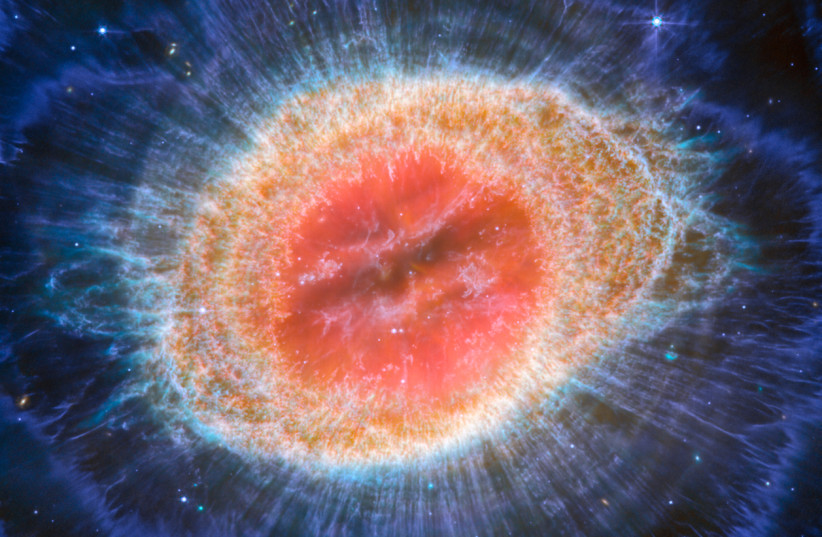NASA released new images Monday taken by the James Webb Space Telescope of the Ring Nebula – one of the first known examples of cosmic gas and dust formed by a dying star discovered by humans.
The Ring Nebula is an early example of a planetary nebula – when gases and emissions produced by a dying star emit a glowing, colorful shell.
The images were captured by the Webb Telescope, which was developed in 2016 and equipped with high-resolution and high-sensitivity instruments that allow it to view objects too old, distant, or faint for the Hubble Space Telescope.
A ‘surprising revelation’

“When we first saw the images, we were stunned by the amount of detail in them,” said Roger Wesson, from the Cardiff University School of Physics and Astronomy, to NASA.
"The bright ring that gives the nebula its name is composed of about 20,000 individual clumps of dense molecular hydrogen gas, each of them about as massive as the Earth.”
The “surprising revelation,” as Wesson called it, captured in these new photographs led researchers to discover that arcs within the inner halo of the nebula form every 280 years – a far faster time period than any previously known for arcs to form within a nebula. Thus, researchers believe that a companion star played a role in affecting the development of the Ring Nebula.
“These rings suggest that there must be a companion star in the system, orbiting about as far away from the central star as Pluto does from our Sun. As the dying star was throwing off its atmosphere, the companion star shaped the outflow and sculpted it,” described Wesson.
NASA James Webb Telescope
Wesson also noted the tremendous capability of the Webb telescope. “We see curious ‘spikes’ pointing directly away from the central star, which are prominent in the infrared but were only very faintly visible in Hubble Space Telescope images.”
“No previous telescope had the sensitivity and the spatial resolution to uncover this subtle effect,” Webb explained.
The massive $9 billion telescope is the most state-of-the-art space telescope in existence. It is equipped with incredibly sensitive instruments and infrared resolution that far exceed the capabilities of other space telescopes, especially NASA’s Hubble Space Telescope.
